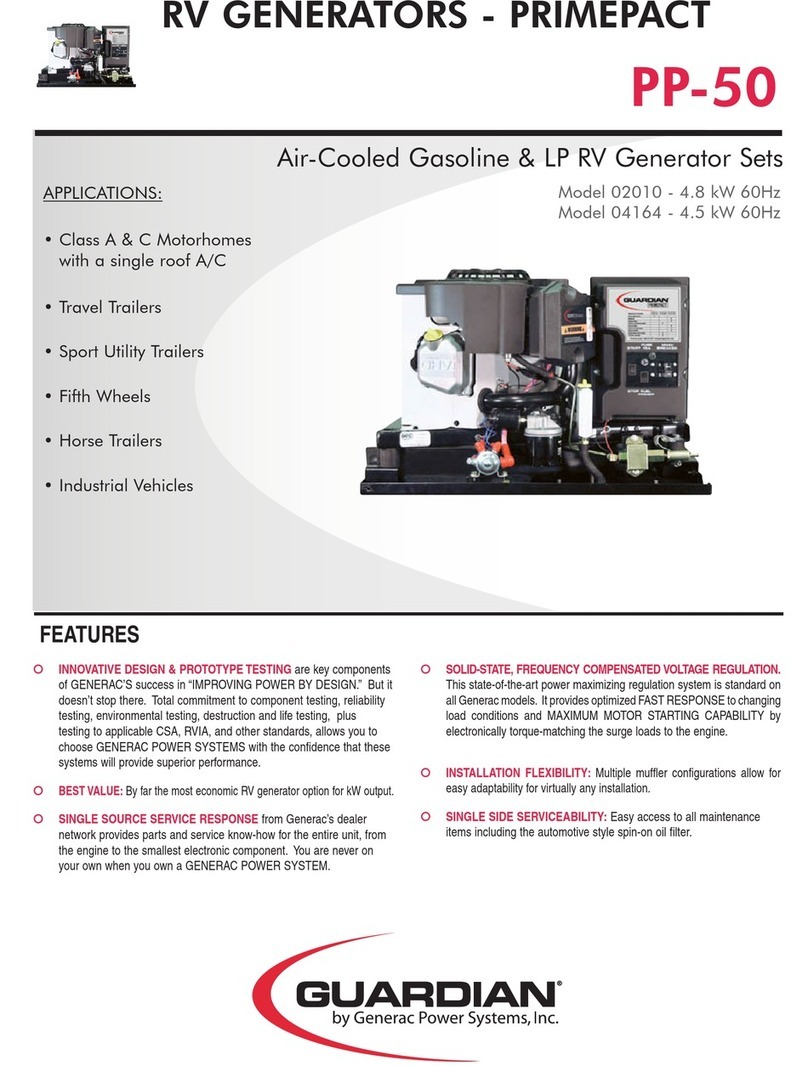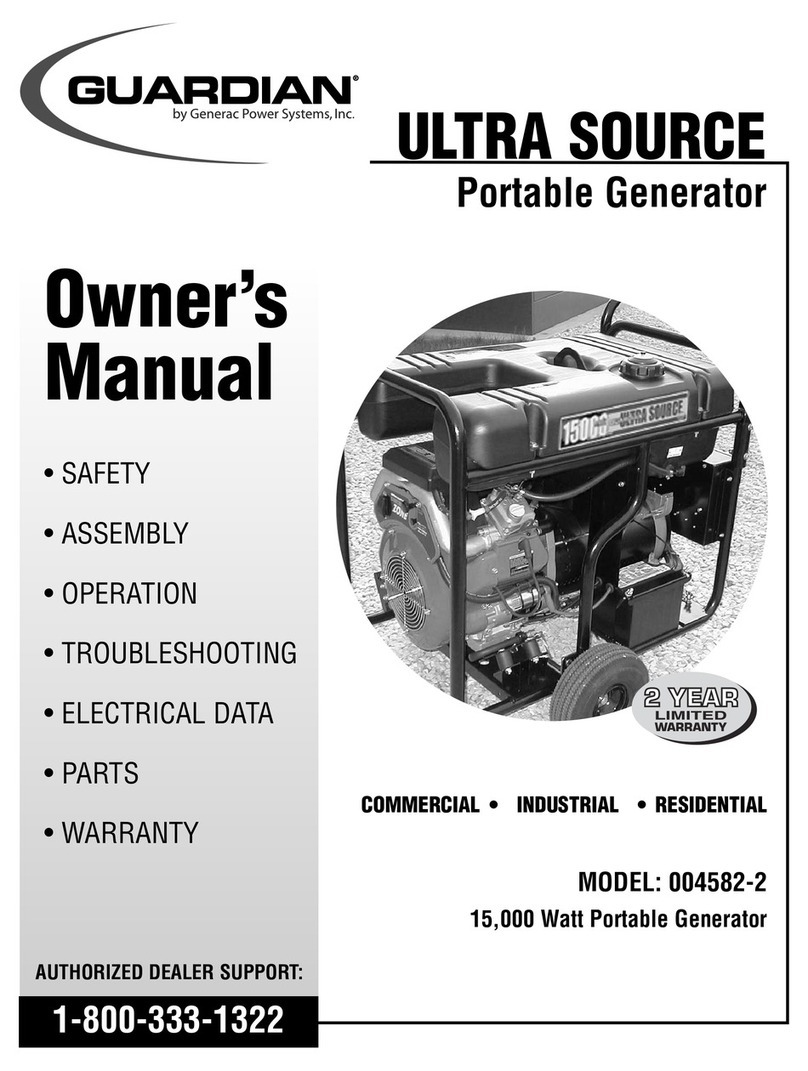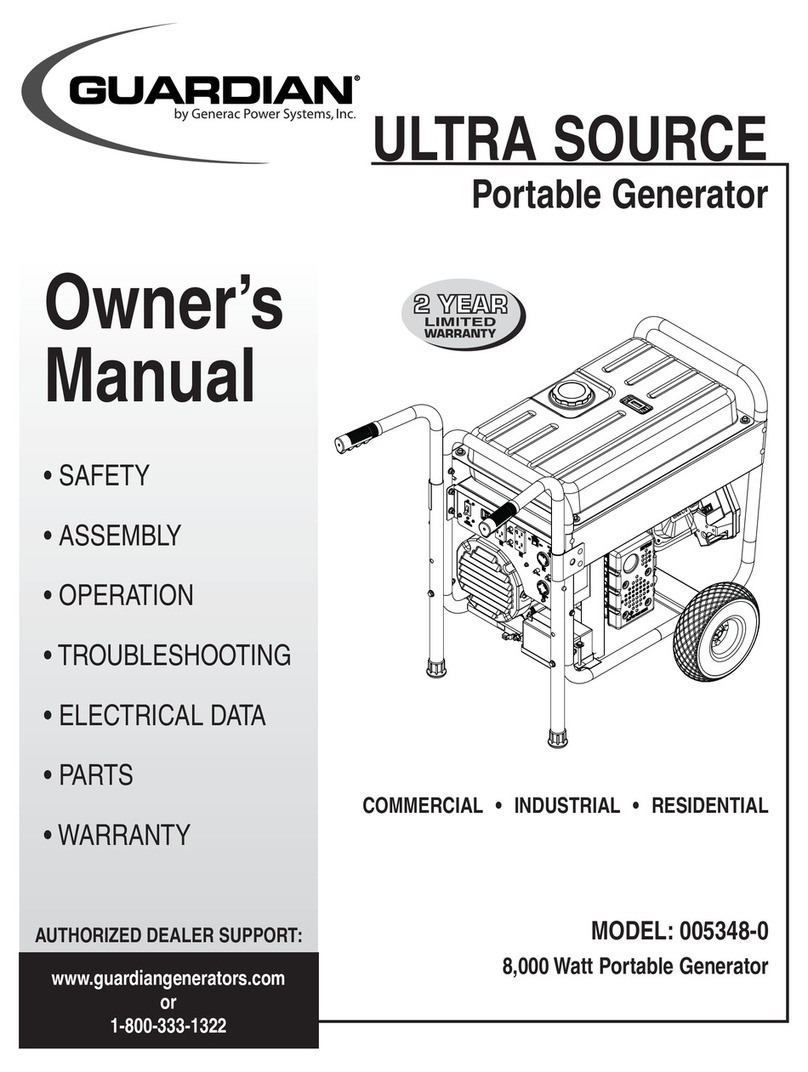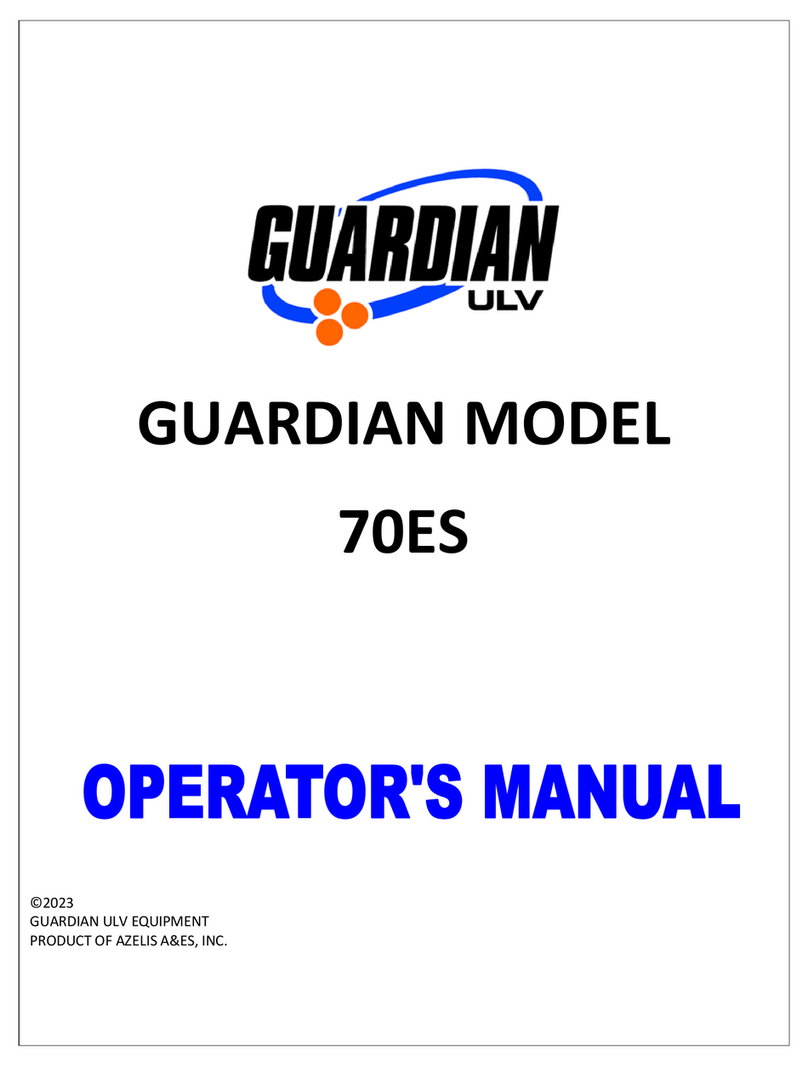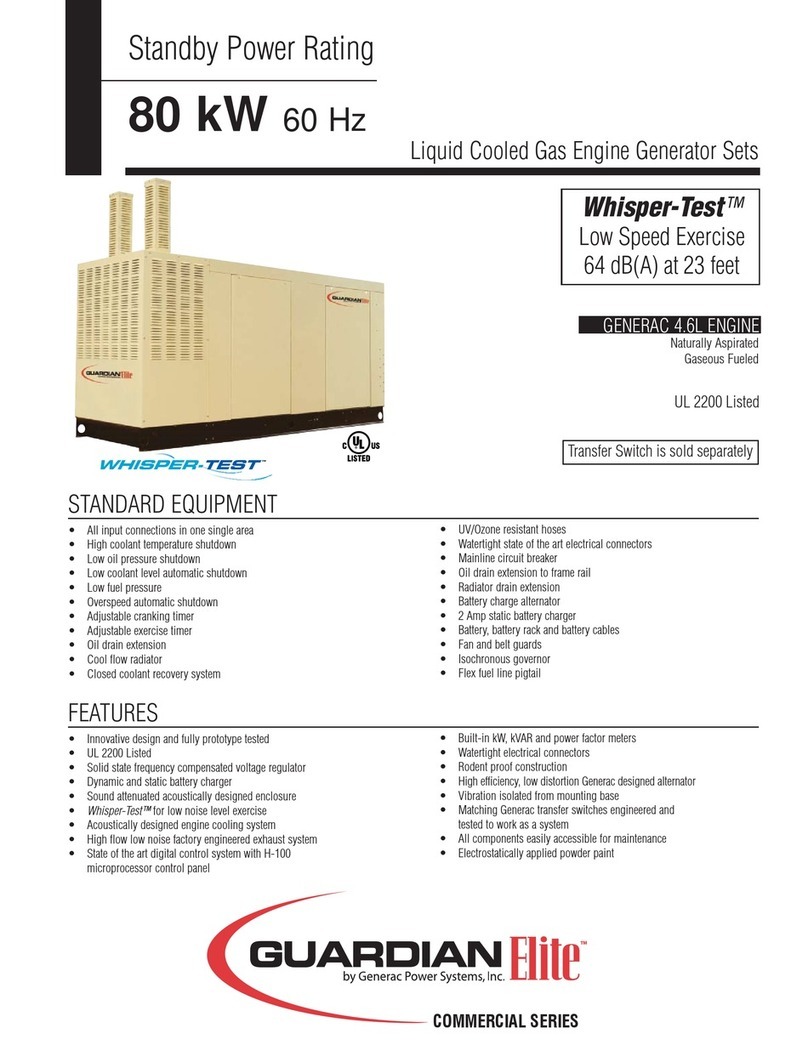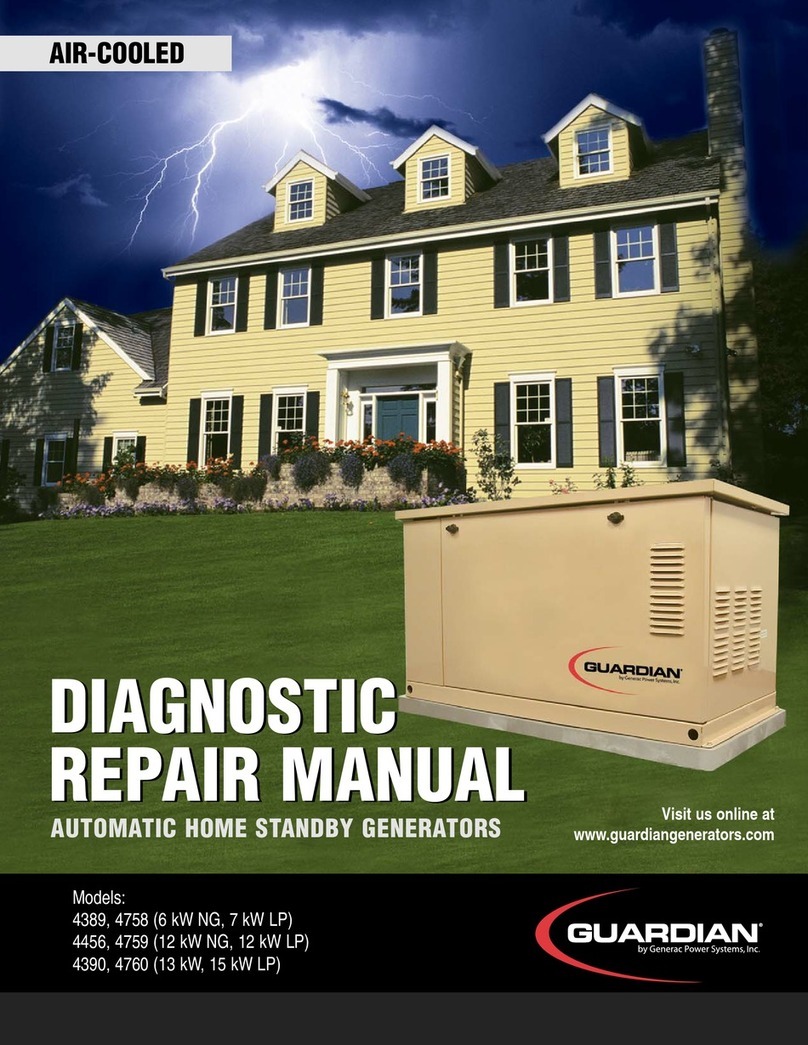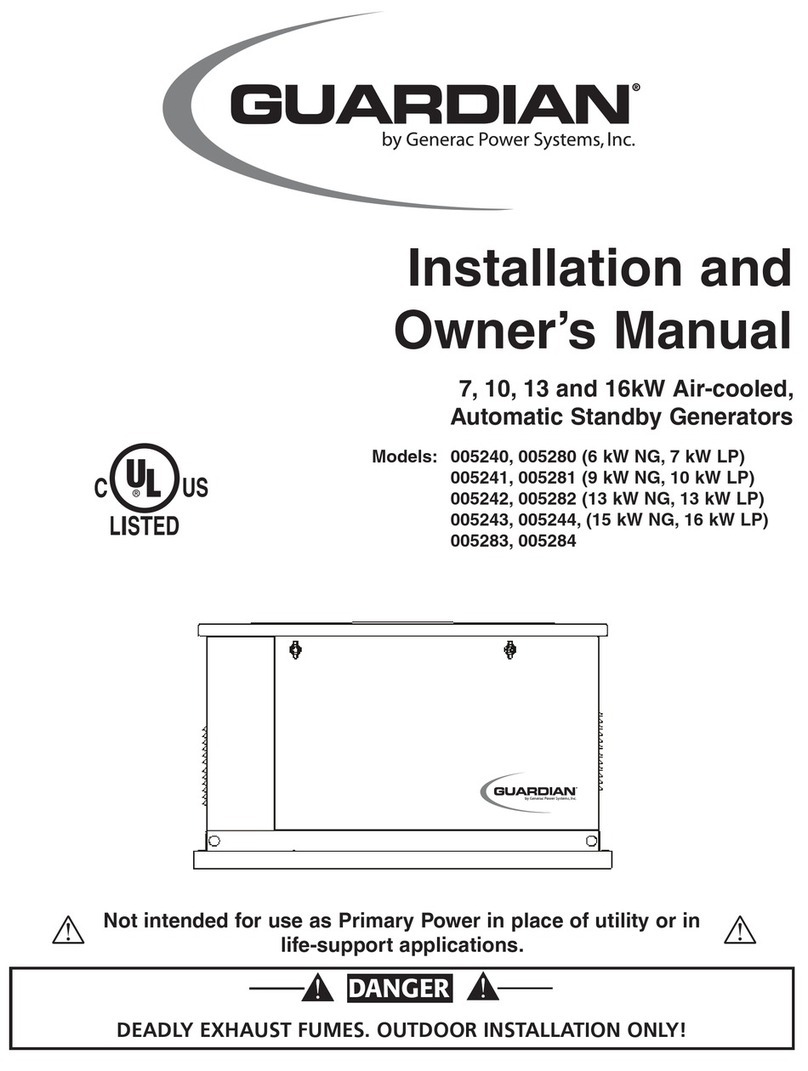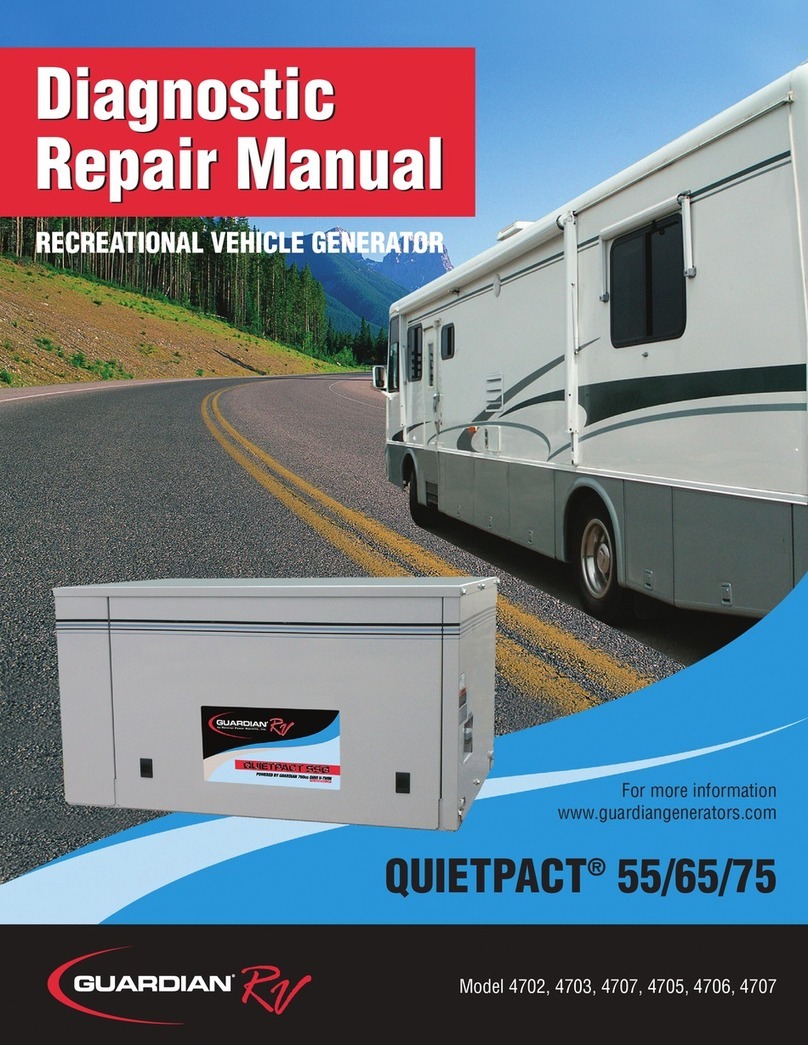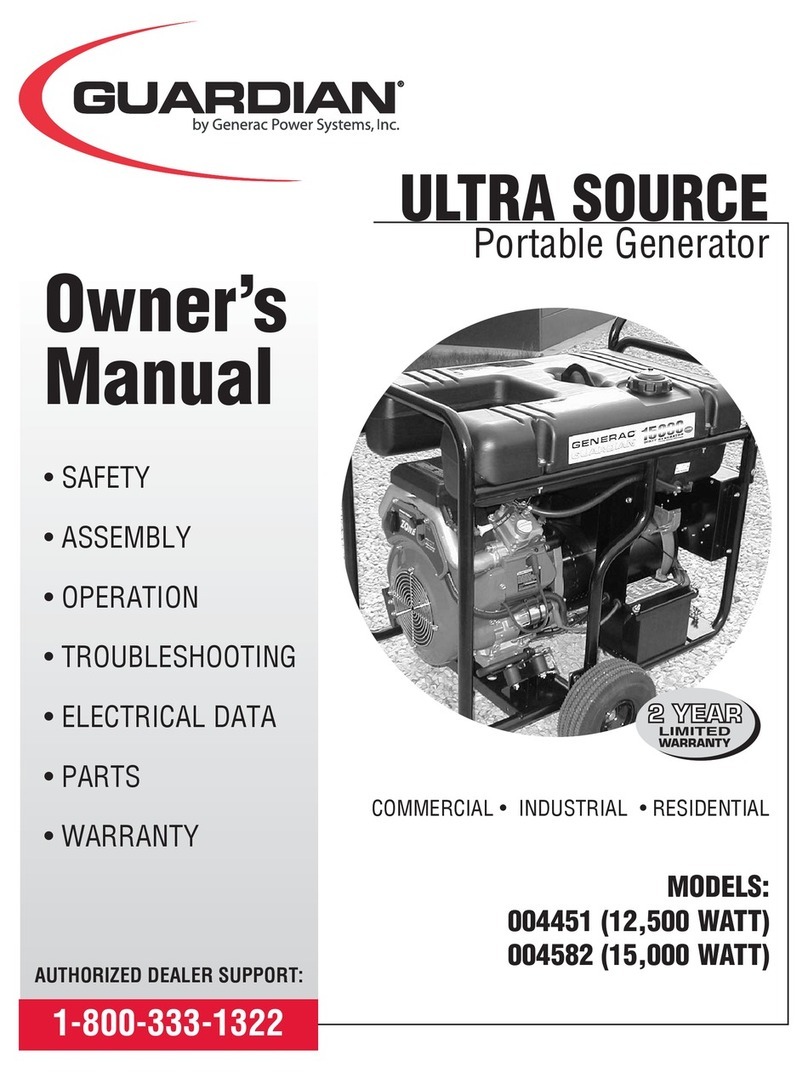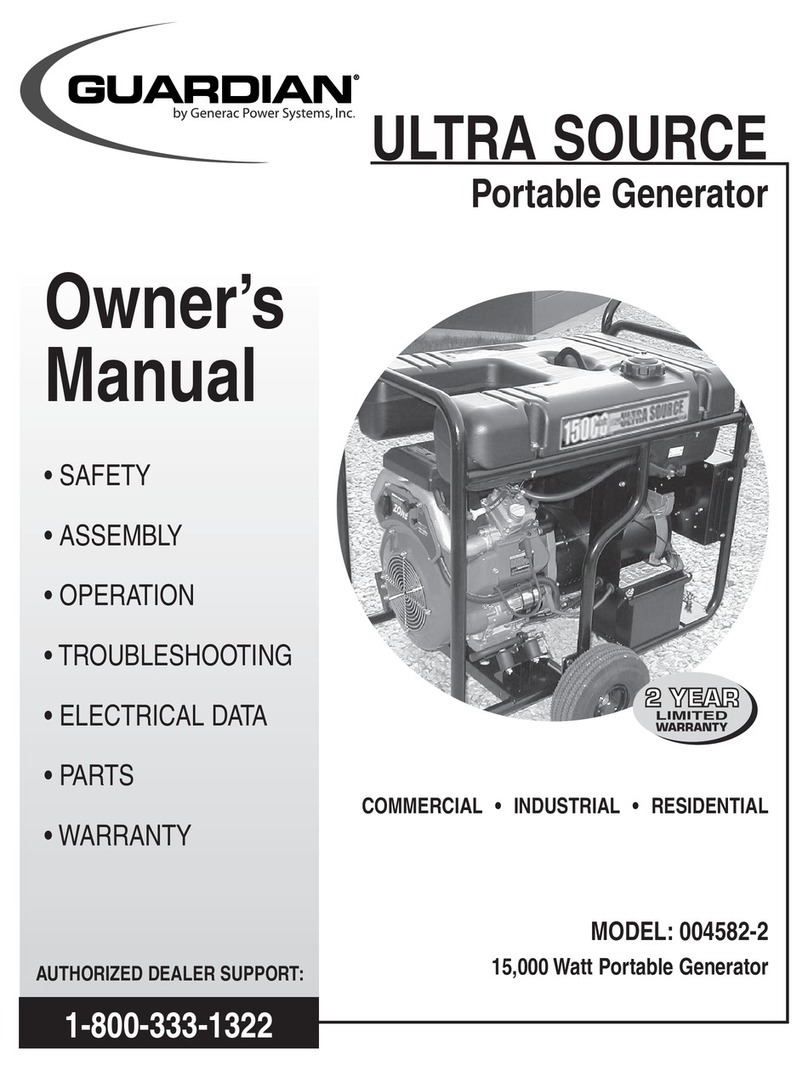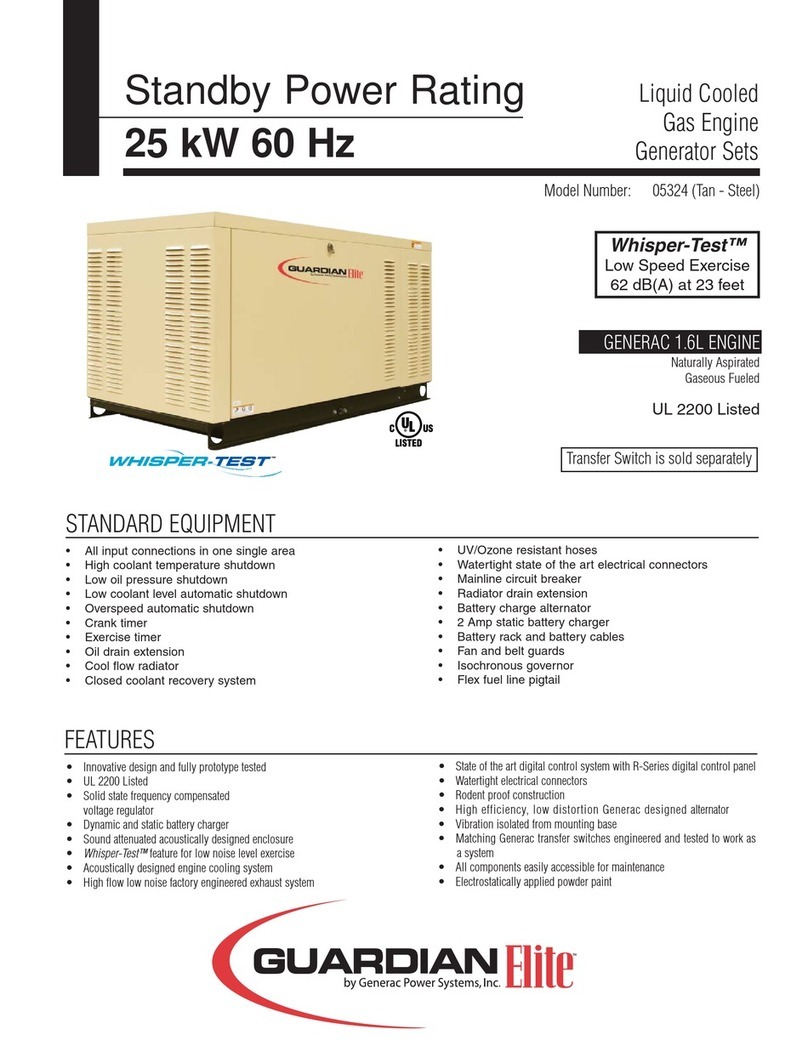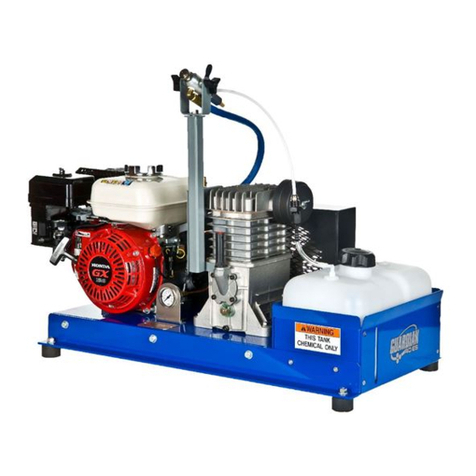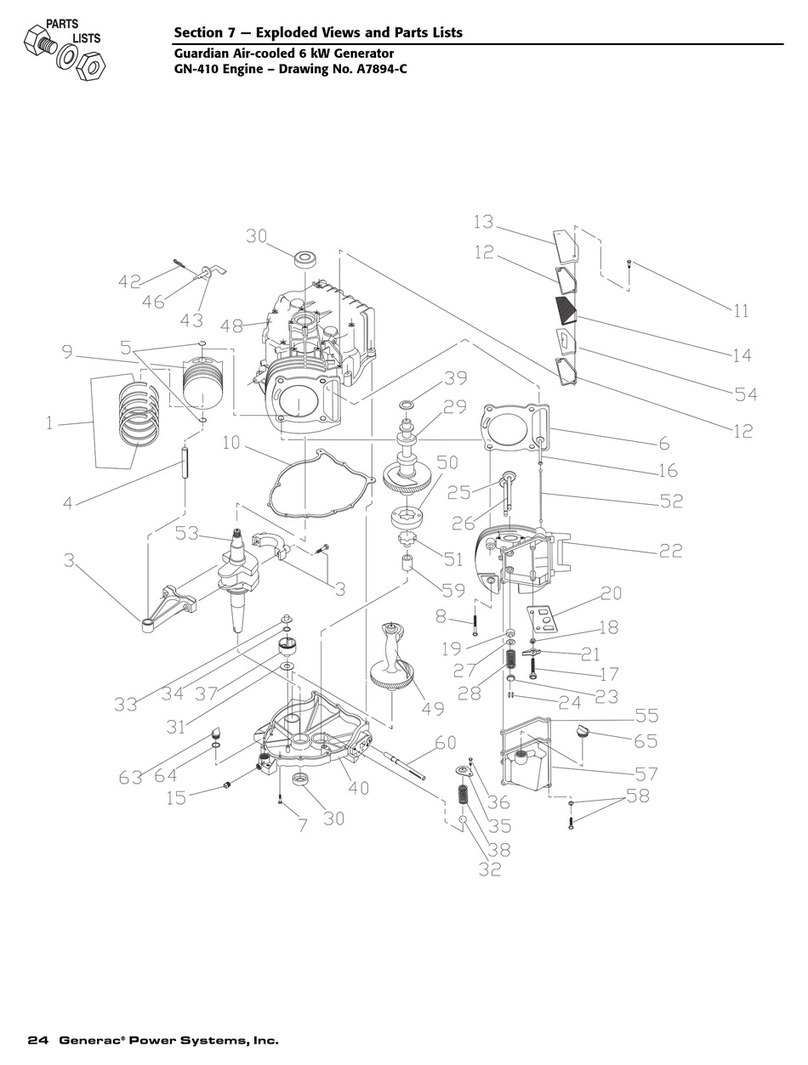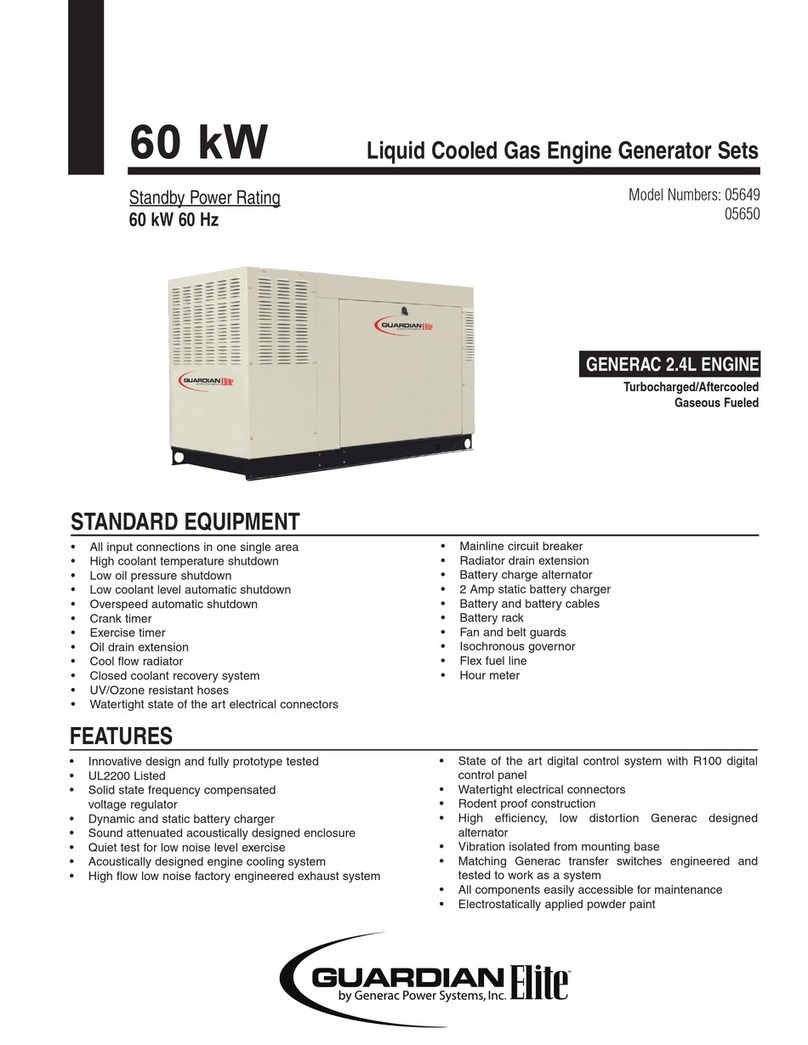
Test 12 - Check And Adjust Engine Governor
(Single Cylinder Units).........................46
Test 12A - Check Stepper Motor Control
(V-twin Engine Units)...........................46
Test 13 - Check And Adjust
Voltage Regulator................................48
Test 14 - Check Voltage And
Frequency Under Load........................48
Test 15 - Check For Overload Condition ..........48
Test 16 - Check Engine Condition....................48
PART 3 - "V-TYPE PREPACKAGED
TRANSFER SWITCHES.......................... 49
3.1 Description and Components .......................... 50
General ............................................................50
Enclosure.........................................................50
Transfer Mechanism.........................................51
Transfer Relay .................................................51
Neutral Lug ......................................................52
Manual Transfer Handle ..................................52
Terminal Block .................................................52
Fuse Holder .....................................................53
3.2 Operational Analysis ....................................... 54
Utility Source Voltage Available .......................56
Utility Source Voltage Failure ..........................57
Transfer To Standby ........................................58
Transfer To Standby ........................................59
Utility Restored.................................................60
Utility Restored, Transfer Switch
De-energized.......................................61
Utility Restored,
Retransfer Back To Utility ....................62
Transfer Switch In Utility...................................63
3.3 Troubleshooting Flow Charts ........................... 64
Introduction To Troubleshooting .......................64
Problem5-InAutomatic Mode,
No Transfer to Standby........................64
Problem6-InAutomatic Mode, Generator
Starts When Loss of Utility Occurs,
Generator Shuts Down When Utility
Returns But There Is
No Retransfer To Utility Power.............65
Problem 7 - Blown F1 or F2 Fuse ....................65
3.4 Diagnostic Tests .............................................. 66
General ............................................................66
Test 21 - Check Voltage at
Terminal Lugs E1, E2 ..........................66
Test 22 - Check Voltage at
Standby Closing Coil C2 .....................67
Test 23 - Test Transfer Relay TR ......................67
Test 24 - Check Manual Transfer
Switch Operation.................................68
Test 25 - Test Limit Switch XB1........................69
Test 26 - Check 23 And 194
Wiring/Connections .............................69
Test 27- Check Voltage At
Terminal Lugs N1, N2..........................70
Test 28 - Check Voltage At Utility 1
And Utility 2 Terminals.........................70
Test 29 - Check Voltage At
Utility Closing Coil C1..........................71
Test 30 - Check Fuses F1 And F2 ...................71
Test 31 - Test Limit Switch Xa1 ........................72
Test 32 - Continuity Test Of Wiring (C1)...........72
Test 33 - Continuity Test Of Wiring (C2)...........72
Test 34 - Check N1 And N2 Wiring ..................73
Test 35 - Check Transformer (Tx).....................73
PART 4 - DC CONTROL ......................................... 75
4.1 Description and Components .......................... 76
General ............................................................76
Terminal Strip / Interconnection Terminal.........76
Transformer (TX)..............................................76
Circuit Board ....................................................76
AUTO-OFF-MANUAL Switch ...........................80
15 Amp Fuse....................................................80
4.2 Operational Analysis ....................................... 82
Introduction ......................................................82
Utility Source Voltage Available........................82
Initial Dropout Of Utility Source Voltage ...........84
Utility Voltage Dropout And
Engine Cranking..................................86
Engine Startup And Running ...........................88
Initial Transfer To The “Standby” Source...........90
Utility Voltage Restored /
Re-transfer To Utility ............................92
Engine Shutdown ........................................... 94
4.3 Troubleshooting Flow Charts ........................... 96
Problem 8 - Engine Will Not Crank
When Utility Power Source Fails .........96
Problem 9 - Engine Will Not Crank
When AUTO-OFF-MANUAL Switch
is Set to "MANUAL".............................96
Problem 10 - Engine Cranks
but Won't Start.....................................97
Problem 11 - Engine Starts Hard and
Runs Rough / Lacks Power .................98
Problem 12 - Engine Starts and Runs,
Then Shuts Down................................99
Problem 13 - No Battery Charge ...................100
Problem 14 - Unit Starts and Transfer Occurs
When Utility Power is Available ........101
Page 2
